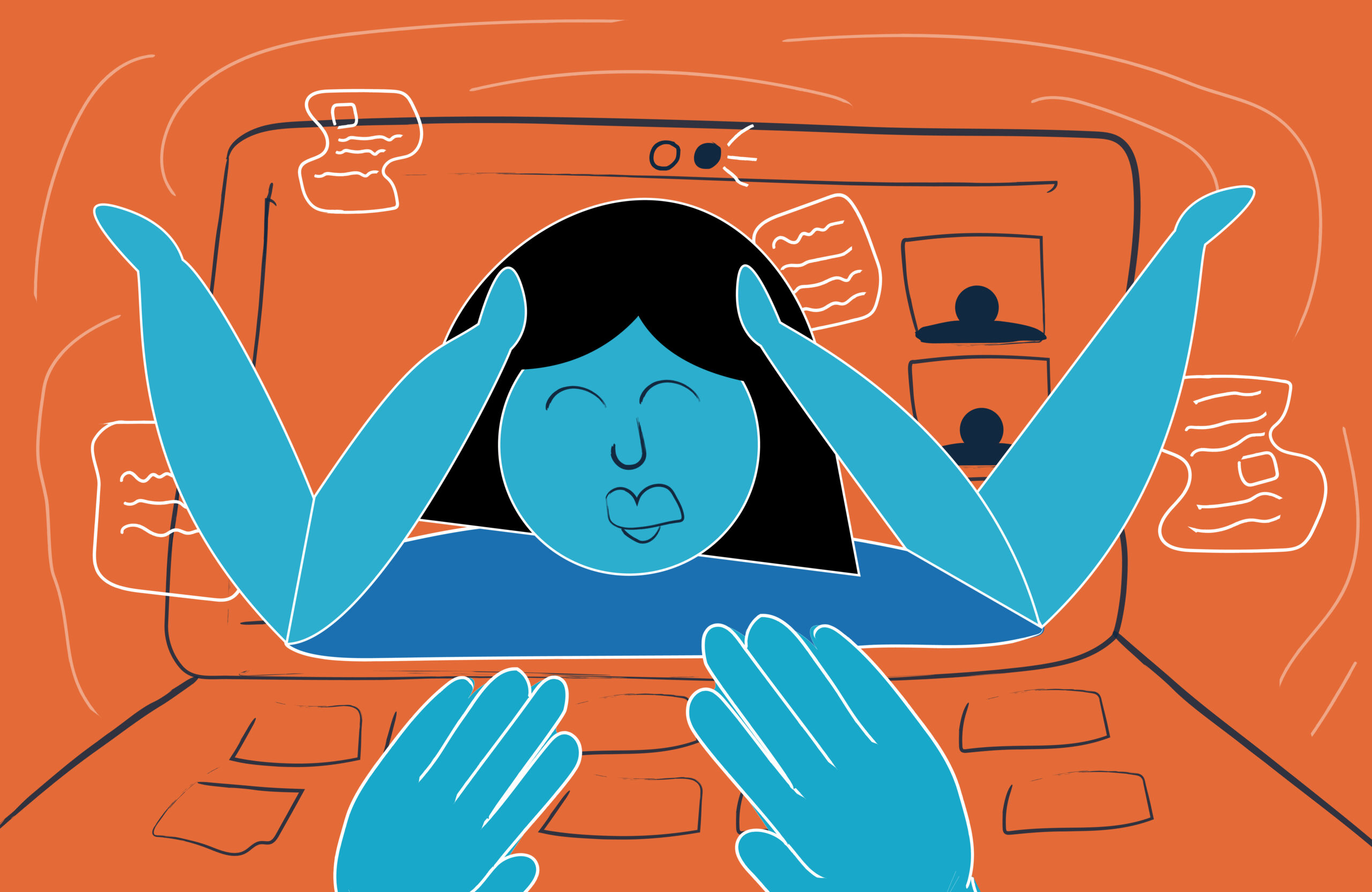I joined M Booth Health a year ago as the country went into lockdown and companies shifted to remote work—but before “Zoom fatigue” had entered our vernacular. I had no idea I’d be thrown into a world where public health would saturate my every waking hour. As a health communicator, the pandemic increased my consumption of health news—both during my work day and during my “personal time.”
The pandemic has filled life with ebbs and flows of loneliness, isolation, and lack of control. Constant engagement with the COVID-19 news cycle hasn’t helped. I’m not alone in this—there is increasing evidence that endless COVID-19 news is negatively affecting our collective mental health. And, like many, I find myself doomscrolling late at night lying in bed, scanning never-ending bad news, finding it soothing to feed my compulsive need for information despite knowing it’s bad for sleep and mental health. At work, we pride ourselves on keeping fingers on the pulse of news, but what happens when we forget to check our own vitals?
For many, the distinction between the workday and the rest of the time has become blurry at best. So many employed people feel they are working longer hours and finding it hard to maintain work/life balance. Like many public health communicators, I am the resident health expert for friends and family members, explaining incubation periods, when to wear masks, where to get vaccinated, and what myths to ignore.
Information about mental health care during the pandemic is voluminous (I Googled “how to manage mental health during pandemic” and got over 147 million results). Advice spans healthcare provider recommendations to listicles with well-intentioned but empty advice. We know we’ll feel better if we exercise, eat healthy, get eight hours of sleep, and drink more water, but sometimes self-care requires a more personal approach.
I’ve found that listening to my mind and body has been effective for developing my own strategies for self-care and mental health. Here are the lessons I’ve learned this year:
It’s important to unplug and know your limits. Many of my friends turned off news notifications from their phones to avoid frequent stress-inducing pings. I turned inward and spent more time exercising and establishing a new routine that made me feel more in control, better rested, and more mentally prepared to absorb the influx of news during the week. I also turned to my family for socializing and established limits to the amount of COVID-19 news we could discuss at any given time, to avoid obvious anxiety triggers.
Take mental health days. Many companies, including M Booth Health, have prioritized employee mental health amid the pandemic, investing in additional resources and encouraging staff to take days to recharge in order to bring their best, healthiest selves to (virtual) work every day. This has also helped break down the stigma of talking about mental health and empowered employees to recognize when they need to unplug to avoid burnout. I’ve found it helpful to think about mental health as a necessary part of overall health and wellbeing and have learned to take breaks so I can come back to my work with fresh eyes and new energy.
Turn off your camera. Zoom fatigue is real – and so is my eye strain – and it can be anxiety-inducing to always be on screen and be able to watch yourself during work meetings or catch-ups with friends. Technology glitches, awkward pauses or interruptions, and unexpected background noise can also be really draining. While I miss seeing my friends’ faces, rather than video chatting, I’ve turned to good old fashioned phone calls when I want a relaxing catch-up with friends. This has given me the freedom to not worry what I look like, what I’m wearing, or how the lighting is where I’m sitting. When it’s nice out, it also allows me to go on long meandering walks as we talk, giving me more time outside and away from devices.
Adopt a pet. The hallmark social isolation of the pandemic inspired many people to foster or adopt pets. Studies have shown that pets can provide mental health benefits by reducing stress, anxiety, depression, and feelings of loneliness and social isolation. They may even help boost your productivity. At the beginning of the pandemic, I adopted two cats to be my work-from-home colleagues. They have joined numerous work calls (which many of my colleagues can attest to) and have provided immeasurable companionship and entertainment during a difficult, isolating year. If you’re not a pet person, a study has found that even just watching cute animal videos may help reduce stress and anxiety!
The past year has provided an opportunity to speak more candidly about mental health challenges and learn how to prioritize the “life” part of work/life balance. The blurred line between work and life has actually given us a chance to glimpse into our colleagues’ lives in a more personal way. As we settle into our second year in the pandemic, I expect mental health to be a bigger priority—for individuals and for companies—and a louder part of the global conversation. Let’s make sure this inflection point reminds us to talk openly about mental health and prioritize the health and wellbeing of everyone. The full effects of the pandemic and remote work on our mental health are still unknown, but as we recognize Mental Health Awareness Month this May, we can all take steps now to care for ourselves and others.


